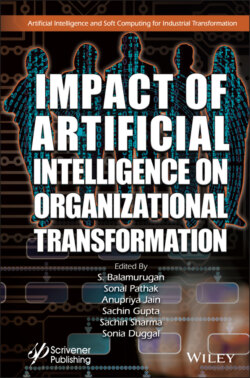Читать книгу Impact of Artificial Intelligence on Organizational Transformation - Группа авторов - Страница 43
2.3 Features of Generation 1: Ring Trading
Оглавление1 1. Complete Human Interaction: Back in the days of ring trading, no technology was used and the whole system worked manually. There were no computers to store the data, no internet to circulate the information to the places, so everything was managed by a few people who were closely associated with the stock markets of that time.
2 2. Low Volume: Since a lot of information flow and also awareness about the businesses and their stock was not there, so stock trading did not used to happen at grass root level. It was only limited to a few people who knew big business houses or their associates or the ones who had good financial background who were approached by the brokers.
3 3. Less Transparency: Since there was no centralization and everything used to happen with hand by a few people, also with less information flow, the mechanism was not very transparent [4]. Clients had to trust the brokers for information and also regarding the prices of the shares they traded in.
4 4. No Authenticated Trade Verification: If we compare it with current times when at the end of every day broker has to confirm the trade personally to the client and which is also intimated to him by SEBI and his DP at the times of ring trading, then no such authentication used to take place at broker and client end which at many times resulted in defaults.
5 5. Physical Exchange of Share Certificates and Money: Share certificates existed in physical form in hard copy, had to be sealed with company stamp, and had to be posted from one owner to another in case of a trade. Same was the case with money; it actually changed hands between clients, brokers, stock exchanges, etc. [2]. So, the whole process was very lengthy and time taking which also resulted in loss and theft of share certificates and money.
6 6. Localized Functioning of Exchanges: There were a lot of stock exchanges; literally, at all centers of trade, otherwise people of that city could not trade efficiently. Companies had to be listed on each stock exchange to create volume and presence at all places. It all gave rise to complexities and also gave way for scams and frauds.
7 7. No Participation of Tiers II & III and Rural India: Since information flow was very less, so people in smaller cities and towns had no idea about the working of stock exchanges. They either thought of it as a place of making big money or a hoax to lose money. So, the actual participation was not there by the people of smaller places.
8 8. Long Trading Cycles: Today, a trade squares up in T+2 days that means that with 3 working days after a trade has been executed, the seller gets the money in his account and shares from his DP are transferred to the buyers account, and at buyers end, he gets the shares in his DP and money from his account gets deducted. This all happens in 2 days, but back in ring trading days, all took T+5 days at least, actual receiving of share certificates may have taken even longer than that.
